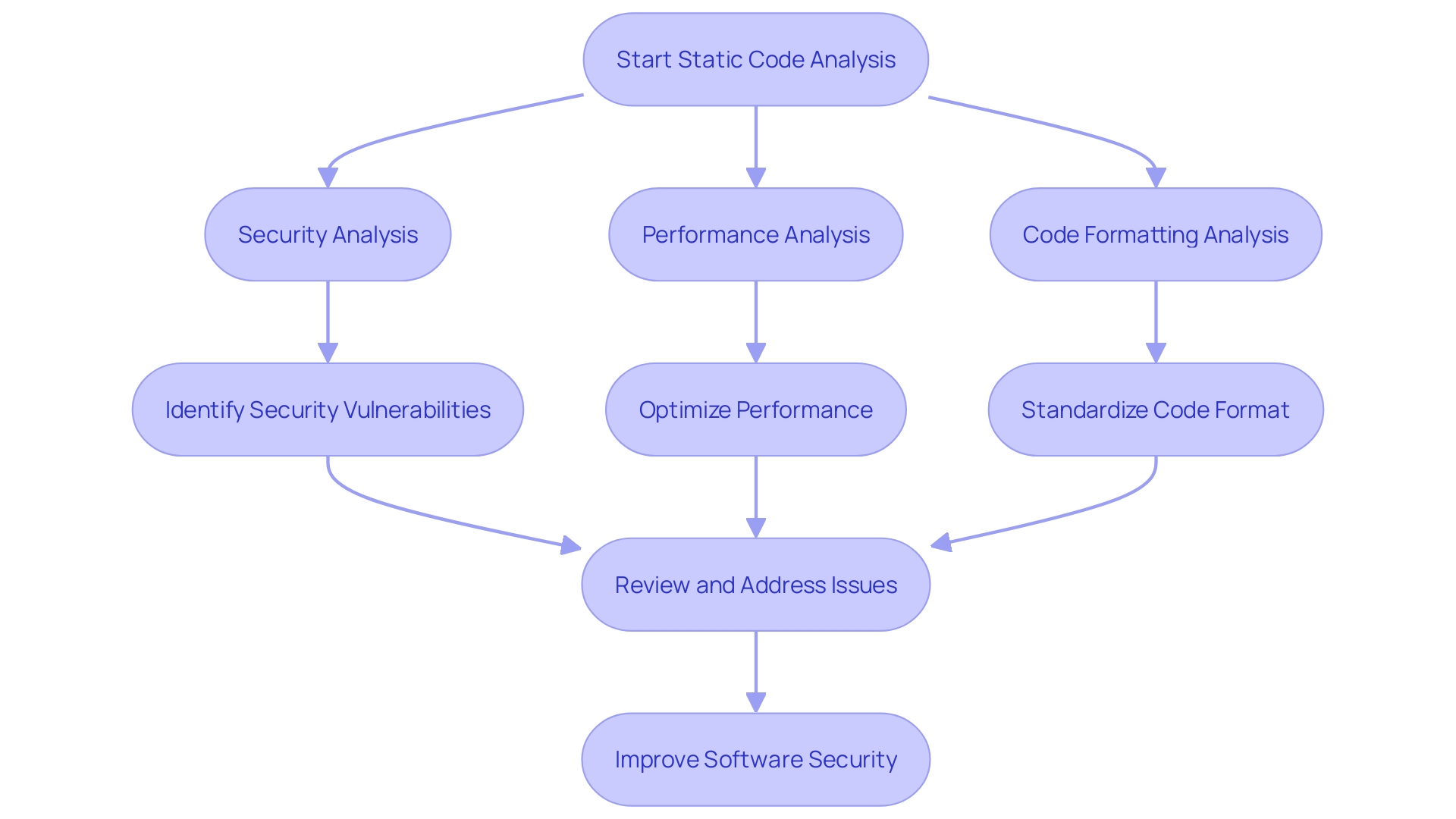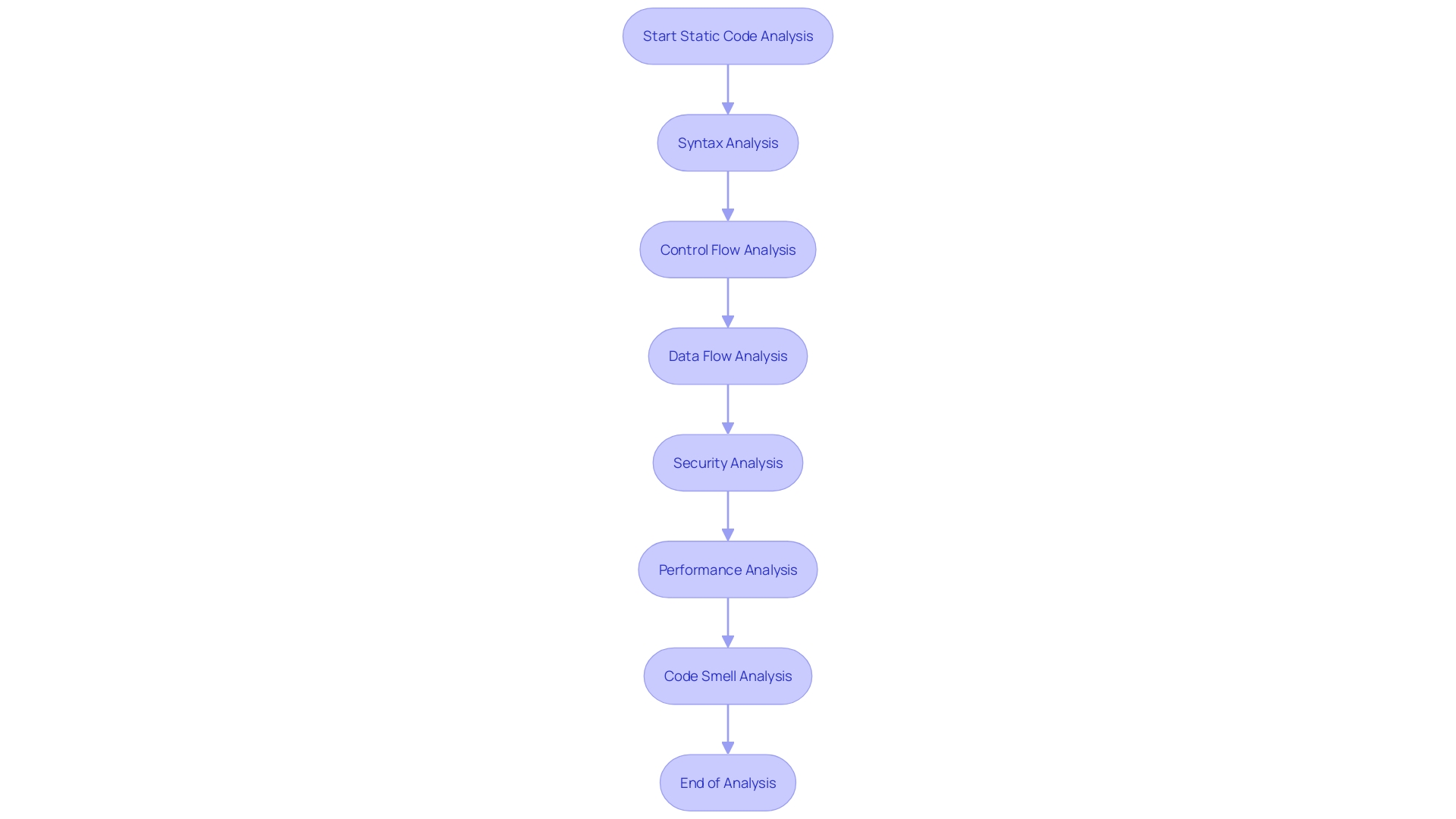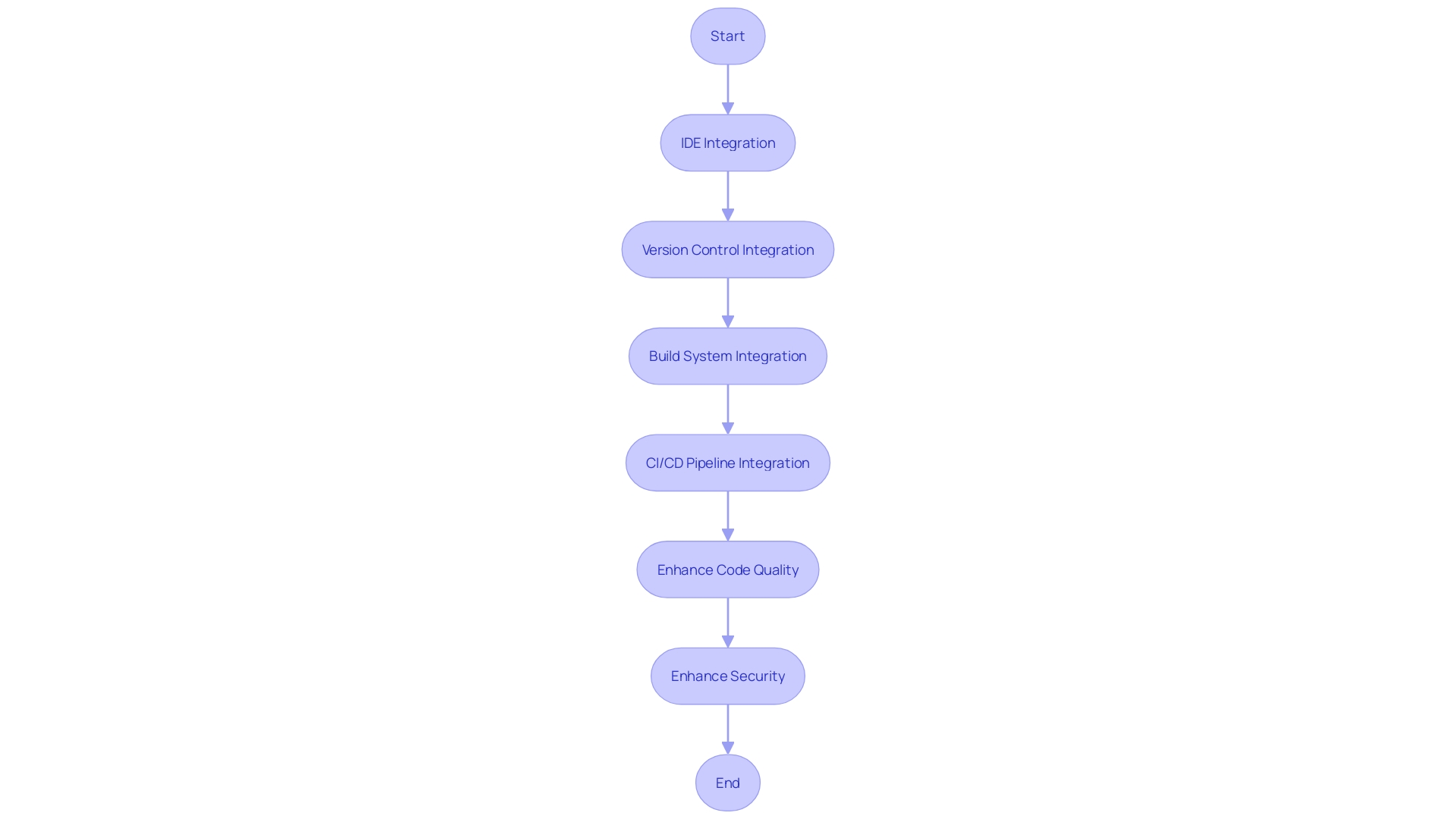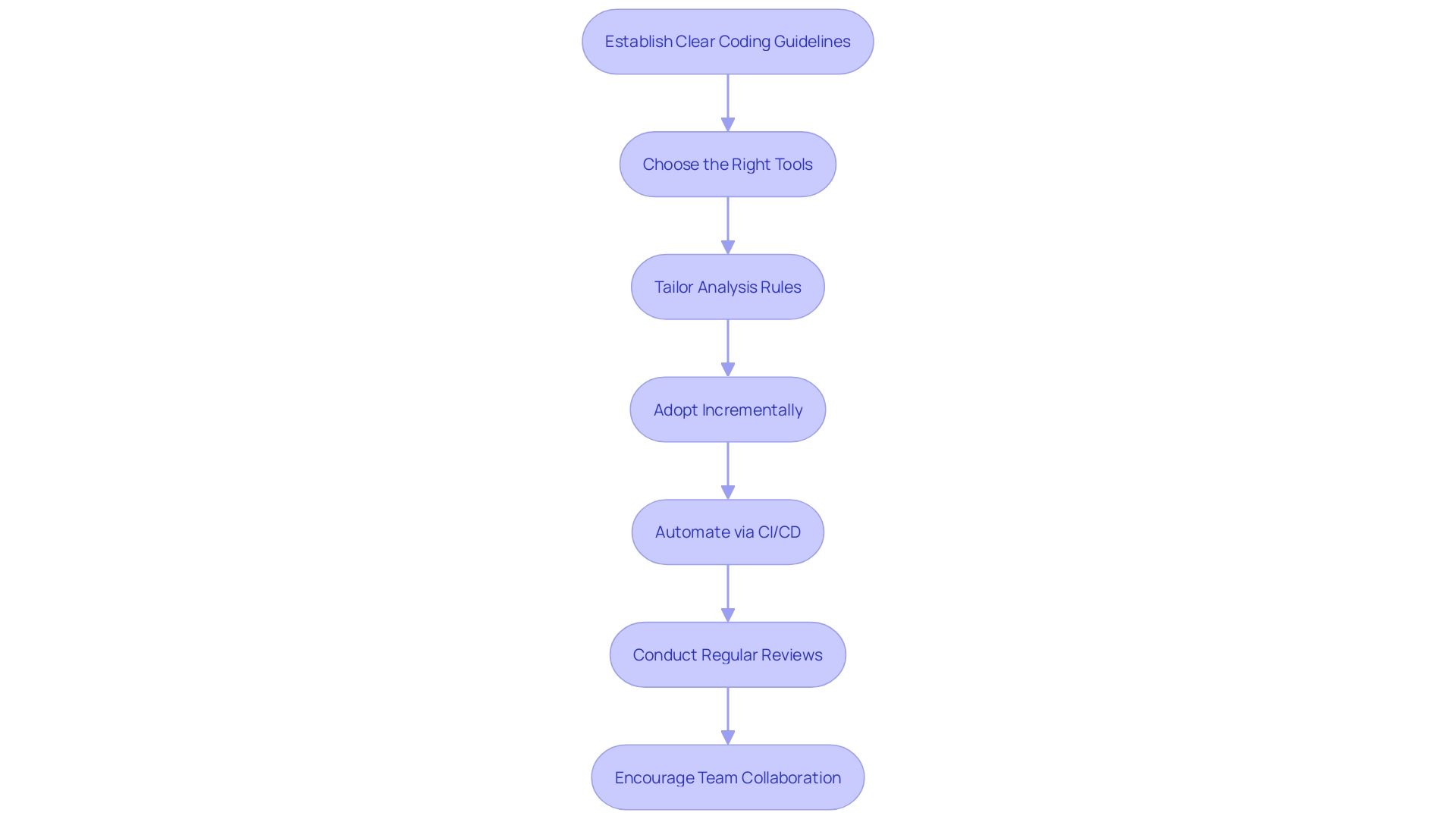Introduction
Static Code Analysis (SCA) is an essential mechanism for scrutinizing source code outside the runtime environment. It serves as a proactive measure for pinpointing potential defects, security gaps, and deviations from coding conventions. Such preemptive examination is critical, particularly in industries with stringent security and quality demands, like banking.
For instance, M&T Bank, with its significant legacy and contemporary digital shift, depends on SCA to uphold Clean Code standards that underpin software maintainability and performance.
As the banking sector evolves, the digital customer experience necessitates the highest security standards and compliance with rigorous regulatory frameworks. Software defects are not merely inconvenient but can precipitate severe security breaches, financial setbacks, and damage to reputation. SCA directly addresses these risks by ensuring code integrity before deployment.
The software development process is not immune to issues such as bugs and coding inconsistencies, often exacerbated by practices like copying code snippets from external sources. Microsoft researchers underscore this at ESEC/FSE 2023 by presenting AdaptivePaste, a technique to refine pasted code snippets, reinforcing the relevance of SCA in modern development workflows.
Understanding the full scope of system quality—trustworthiness, dependability, and resilience—is paramount before integrating SCA tools. These quality factors, as discussed in the research by Jones Yeboah, influence the selection of appropriate SCA tools, which can significantly enhance the reliability of software systems and the efficiency of the development process. This research not only guides developers in choosing the right tools but also encourages further exploration into the evolution of SCA tools.
What is Static Code Analysis?
Static Code Analysis (SCA) is an essential mechanism for scrutinizing source code outside the runtime environment. It serves as a proactive measure for pinpointing potential defects, security gaps, and deviations from coding conventions. Such preemptive examination is critical, particularly in industries with stringent security and quality demands, like banking.
For instance, M& T Bank, with its significant legacy and contemporary digital shift, depends on SCA to uphold Clean Code standards that underpin software maintainability and performance.
As the banking sector evolves, the digital customer experience necessitates the highest security standards and compliance with rigorous regulatory frameworks. Software defects are not merely inconvenient but can precipitate severe security breaches, financial setbacks, and damage to reputation. SCA directly addresses these risks by ensuring code integrity before deployment.
The software development process is not immune to issues such as bugs and coding inconsistencies, often exacerbated by practices like copying code snippets from external sources. Microsoft researchers underscore this at ESEC/FSE 2023 by presenting Adaptive Paste, a technique to refine pasted code snippets, reinforcing the relevance of SCA in modern development workflows.
Understanding the full scope of system quality—trustworthiness, dependability, and resilience—is paramount before integrating SCA tools. These quality factors, as discussed in the research by Jones Yeboah, influence the selection of appropriate SCA tools, which can significantly enhance the reliability of software systems and the efficiency of the development process. This research not only guides developers in choosing the right tools but also encourages further exploration into the evolution of SCA tools.

Benefits of Using Static Code Analysis Tools
Static code analysis tools are indispensable in modern software development, providing a suite of benefits that enhance the development process at various stages. These tools shine a spotlight on potential bugs, such as null pointer exceptions, memory leaks, and unused variables, allowing developers to tackle these issues before they escalate into bigger challenges. The early detection saves precious time and effort that would otherwise be spent in debugging later in the cycle.
Furthermore, these tools are instrumental in bolstering application security. They proactively identify vulnerabilities like SQL injection and cross-site scripting, which is crucial given the rigorous security demands of industries like banking. For example, M&T Bank, with its rich history in community-focused banking, emphasizes the need for stringent security measures and regulatory compliance in its digital transformation journey.
This highlights the importance of static code analysis in maintaining the security and integrity of highly sensitive data.
The pursuit of high-quality code is another area where static code analysis tools excel. They enforce coding standards and best practices, ensuring the codebase is not only functional but also clean, readable, and maintainable. Code smells such as duplicated code or complex logic are promptly identified, guiding developers towards code refactoring and optimization for enhanced performance.
In the context of regulatory compliance, these tools ensure adherence to industry standards and coding guidelines, checking for any deviations from established coding conventions or architectural patterns. This level of compliance is especially pertinent for organizations like M&T Bank, where maintaining standards is not just best practice but a necessity for operational smoothness.
Lastly, the integration of static code analysis tools into continuous integration pipelines exemplifies their role in fostering a culture of continuous improvement. Instant feedback mechanisms provide developers with timely insights, enabling issues to be addressed promptly and reducing the likelihood of costly problems later on.
The recognition of tools like Synopsys' Coverity in The Forrester Wave™ report for Static Application Security Testing underscores the industry's acknowledgement of the value provided by these solutions. With high scores in detection, product security, and DevSecOps workflows, it is evident that static code analysis tools are pivotal in shaping secure and efficient development practices.
Core Features of Static Code Analysis Tools
Static code analysis (SCA) tools are pivotal in software development for optimizing the reliability and security of code. These tools scrutinize the source code without actually executing it, providing invaluable insights into code quality. Here's a deeper look into their key features:
-
Code Parsing: SCA tools dissect the source code to construct an abstract syntax tree (AST). This structured representation allows for an in-depth assessment of the code's architecture, facilitating the detection of syntactical and structural problems.
-
Rule-Based Analysis: By applying a set of pre-established rules, SCA tools scrutinize code for a multitude of concerns including adherence to coding standards, security loopholes, and performance bottlenecks, ensuring that developers are adhering to best practices.
-
Issue Detection: Bugs, security flaws, code smells, and standard violations don't stand a chance as SCA tools highlight these issues with comprehensive reports pinpointing their exact location and characteristics.
-
Customization: Flexibility is key as SCA tools offer customization options for analysis rules and configurations. This enables teams to tailor the tools to their project's unique demands, aligning with specific coding conventions and requirements.
-
Integration: Streamlining the development process, SCA tools can be seamlessly woven into popular development environments and CI/CD pipelines. With plugins and extensions for integrated development environments (IDEs), version control systems, and build systems, developers can effortlessly embed code analysis into their routine workflows.
Understanding the broader context of system quality is critical when integrating SCA tools into your workflow. They contribute significantly to cultivating a culture of quality within your team and organization. By focusing on unit-level code quality and being mindful of the system's reliability and resilience, SCA tools help tailor software behavior to operate optimally within its intended environment.
Types of Static Code Analysis Techniques
To achieve a high-quality software system, understanding the multiple facets of system quality is crucial. Static Code Analysis (SCA) plays a pivotal role in this context by providing a framework for code examination across various critical attributes. Let's delve into the key types of static code analysis techniques:
- Syntax Analysis scrutinizes the code's structure and grammar to pinpoint syntax errors and non-conformities to coding standards. This foundational analysis is the first step in ensuring code correctness.
- Control Flow Analysis probes the routes of code execution, highlighting issues such as unreachable segments, infinite loops, or flawed conditional branches, which could severely affect the program's logic.
- Data Flow Analysis monitors the movement and usage of data throughout the code, identifying potential pitfalls like uninitialized variables, null pointer dereferences, and improper variable assignments, which are often elusive and problematic to debug.
- Security Analysis zeroes in on code for security vulnerabilities, looking for risks such as injection attacks, authentication bypasses, and mishandling of sensitive data. Security experts like Michael Hill stress the importance of this analysis in safeguarding information security.
- Performance Analysis aims to locate code that could slow down the system, use excessive memory, or employ inefficient algorithms. This is particularly critical for maintaining a responsive and scalable system.
- Code Smell Analysis detects sections of code that may signal deeper design or implementation flaws, such as code duplication, overly long methods, or overly complex logic that can impede future maintenance and scalability.
The key to integrating SCA tools effectively into your development workflow is to understand their impact on the overall quality culture within your team and your organization. As we explore the various domains that SCA addresses, we'll also look at practical examples and the preferred tools for different programming languages, guiding software developers and researchers in enhancing the quality and reliability of software systems.
An overarching theme in the adoption of SCA is the pursuit of trustworthiness, dependability, and resilience in software systems. This comprehensive approach to code analysis is not merely a technical exercise but a strategic factor in shaping robust software that stands the test of time and operation.

Popular Static Code Analysis Tools
The landscape of static code analysis (SCA) tools is rich and varied, with several acclaimed options catering to different programming languages and quality assurance needs. Among the open-source platforms, SonarQube stands out with its comprehensive analysis capabilities, supporting a multitude of languages and providing numerous rules and metrics to evaluate code quality. For Java developers, Checkstyle is a go-to SCA tool that helps maintain coding standards and best practices by inspecting code for violations of conventions.
JavaScript programmers often turn to ESLint, a tool designed to spot programming errors, enforce coding styles, and flag potential security risks. PMD, catering to Java, JavaScript, and XML, is notable for detecting a wide array of coding flaws, including performance bottlenecks and security gaps. In the realm of bug detection for Java, FindBugs offers detailed reporting on code defects, enabling developers to pinpoint and address issues efficiently.
On the commercial front, Coverity provides advanced detection of bugs and security vulnerabilities across multiple programming languages, delivering actionable insights to improve code quality and safeguard security. These tools play a crucial role in the software development process, as highlighted by a case study involving the OpenVINO project. Here, static analysis revealed enlightening typos and errors, underscoring the value of SCA in enhancing code reliability.
The importance of SCA goes beyond error detection; it's a vital component of a system's overall quality, which encompasses trustworthiness, dependability, and resilience. As software complexity increases, so does the need for robust SCA solutions that can thoroughly assess intricate systems built with diverse libraries and frameworks. The adoption of SCA tools contributes to a culture of quality within teams and organizations, fostering an environment where security and reliability are paramount.
This sentiment is echoed by industry experts who advocate for a focus on developer ecosystems, safe coding practices, and the reduction of common defects to improve software security and reliability at scale.
Integration with Development Environments and CI/CD Pipelines
Integrating static code analysis (SCA) tools into your development workflow is a strategic move towards enhancing code quality and security. These tools offer a multitude of integration points that align with the modern software development lifecycle:
-
IDE Integration: Most SCA tools come with plugins for IDEs like Visual Studio Code, IntelliJ IDEA, and Eclipse. This integration provides instant feedback to developers as they write code, highlighting potential issues and suggesting improvements.
-
Version Control Integration: By connecting SCA tools with version control systems such as Git, code changes are analyzed in real-time. This facilitates early detection of issues during code reviews, helping to maintain a high standard of code quality from the start.
-
Build System Integration: Incorporating SCA into build systems like Maven or Gradle ensures that code quality checks are an integral part of the build process, preventing the progression of subpar code.
-
CI/CD Pipeline Integration: The inclusion of SCA tools in CI/CD pipelines ensures that code quality is assessed continuously. As changes pass through stages like Jenkins or GitLab CI/CD, automated analysis helps refine the code before it reaches production.
These integration capabilities of SCA tools support the creation of a quality-focused development environment. For instance, M&T Bank, with its rich history and commitment to innovation, adopted SCA to establish Clean Code standards across its development teams. This decision was crucial in maintaining their software's reliability and compliance, especially in an industry that demands the highest security levels.
Furthermore, the evolution of CI/CD workflows has made it possible for developers to focus on innovation while automated tools handle quality and security checks. Similar to assembling a puzzle, CI ensures every new piece fits, while CD efficiently places each piece into the final picture. With SCA tools, developers receive comprehensive insights on code issues, enabling them to prioritize fixes effectively and maintain a robust software system.

Best Practices for Implementing Static Code Analysis
To harness the full potential of static code analysis for maintaining high code quality, these practices are pivotal:
-
Establish Clear Coding Guidelines: It's essential to have a set of coding standards that all developers adhere to, ensuring uniformity and easier maintenance of the codebase. M&T Bank's initiative to establish 'Clean Code' standards exemplifies the importance of this practice in industries where data security and regulatory compliance are non-negotiable.
-
Choose the Right Tools: The selection of static code analysis tools should be intentional, based on the programming language used and the specific needs of the project. It's crucial to consider the breadth of analysis they offer, how they integrate with other systems, and the support provided by the tool's community.
-
Tailor Analysis Rules: Configuring the tools to reflect your coding standards and project requirements simplifies managing the volume of warnings, as too many can be overwhelming. This customization allows you to focus on the most relevant issues and incrementally adjust as you become more familiar with the tool's capabilities.
-
Adopt Incrementally: Begin with a manageable set of rules and progressively expand your use of the tool. This gradual approach helps teams adjust without being inundated with too many corrections simultaneously.
-
Automate via CI/CD: Incorporating static code analysis into the Continuous Integration/Continuous Deployment pipeline automates the process, ensuring consistent code quality checks and facilitating a more efficient workflow.
-
Conduct Regular Reviews: Periodic code analysis and review sessions are necessary to address emerging issues and prevent the build-up of technical debt. This continuous attention helps maintain a clean, well-functioning codebase.
-
Encourage Team Collaboration: Promoting a team environment where knowledge about static code analysis is shared can significantly enhance code quality. Training and resources should be provided to strengthen the team's understanding of code security and quality.
These best practices, derived from both research and real-world applications, aim to guide software developers and organizations towards making informed decisions in their adoption of static code analysis tools, ultimately contributing to the resilience and reliability of their software systems.

Limitations and Potential Issues with Static Code Analysis
Static code analysis tools are invaluable for ensuring software quality, but they come with their own set of challenges that must be navigated cautiously. A frequent hurdle is the occurrence of false positives and negatives. These tools might incorrectly flag code that is not problematic or, conversely, overlook actual defects.
Diligent manual verification of flagged issues is essential to ensure accuracy.
Moreover, not all tools support every programming language or framework. For instance, when analyzing an options-based market project, understanding whether the code is original or a forked version is crucial. This highlights the importance of selecting a tool that aligns with the project's specific technology stack.
The performance impact is another consideration; extensive codebases can make static analysis a heavy-duty task, potentially slowing down build times and disrupting the development workflow. As with any sophisticated tool, there's often a learning curve. Customizing analysis rules or integrating the tool with existing development processes may require dedicated training and support for developers.
Tool configuration and ongoing maintenance are also non-trivial tasks. Regular updates and adjustments to the tool's settings are necessary to keep pace with evolving project requirements. Lastly, static code analysis tools operate on predefined rules and may lack the nuanced understanding of the codebase's context or the associated business requirements.
Augmenting automated analysis with manual code review and domain-specific insights is therefore indispensable.
In the realm of embedded software, where a lapse in security can have dire consequences, static code analysis is a critical practice. Embedded systems, akin to data centers on wheels in modern vehicles or the critical operations managers in aerospace, demand rigorous security measures from inception. In these sectors, software flaws could lead to severe malfunctions or even loss of human life.
To encapsulate the importance of these tools, consider the insights from Stack Overflow's 2023 Developer Survey, which indicated that 70% of developers are implementing or planning to implement AI tools in their development process. With open source code making up an average of 76% of modern codebases, the need for efficient code quality control is more pressing than ever. Utilizing static analysis tools effectively can be a game-changer in maintaining code integrity and ensuring legal compliance when using AI-generated snippets or open source components.
AI and static analysis tools are reshaping the way we approach software development, as noted in reports and surveys conducted across the tech industry. With a significant proportion of the respondents being in developer and management roles, it's clear that these tools are becoming integral to application security and development processes.
Conclusion
In conclusion, static code analysis (SCA) is essential for scrutinizing source code, identifying defects, and ensuring code integrity. It plays a critical role in industries like banking, where security and quality demands are stringent. SCA tools offer benefits such as early bug detection, bolstering application security, enforcing coding standards, and ensuring regulatory compliance.
The core features of SCA tools, including code parsing, rule-based analysis, issue detection, customization, and integration, enable comprehensive code examination for reliability and security. Different types of static code analysis techniques further enhance software quality.
Popular static code analysis tools cater to different programming languages and provide comprehensive analysis capabilities. Integration with development environments and CI/CD pipelines ensures continuous code quality assessment.
Implementing SCA involves establishing coding guidelines, selecting the right tools, tailoring analysis rules, and promoting team collaboration. While SCA offers benefits, it also has limitations such as false positives, limited language support, and performance impact.
In sectors like embedded software, SCA is critical for security. The use of AI tools and open-source code highlights the importance of efficient code quality control. SCA, AI, and static analysis tools reshape software development and ensure application security.
In conclusion, SCA is a powerful tool for enhancing code quality, security, and compliance. By adopting SCA and following best practices, developers and organizations ensure resilience and reliability in their software systems.
Frequently Asked Questions
What is Static Code Analysis (SCA)?
Static Code Analysis is a process of examining source code outside of the runtime environment to identify potential defects, security vulnerabilities, and non-compliance with coding standards.
Why is SCA particularly important in the banking industry?
The banking industry demands high security and quality standards due to sensitive data handling and strict regulatory frameworks. SCA helps maintain code integrity, prevent security breaches, financial losses, and reputational damage.
How do SCA tools help in software development?
SCA tools provide early detection of bugs, enforce coding standards, identify security vulnerabilities, ensure regulatory compliance, and facilitate continuous improvement within the development process.
What are the key features of SCA tools?
SCA tools feature code parsing, rule-based analysis, issue detection, customization options, and integration with development environments and CI/CD pipelines.
Can you name different types of static code analysis techniques?
Yes, the types include Syntax Analysis, Control Flow Analysis, Data Flow Analysis, Security Analysis, Performance Analysis, and Code Smell Analysis.
What are some popular SCA tools available?
Popular tools include open-source options like SonarQube, Checkstyle, ESLint, and PMD, as well as commercial offerings like Coverity.
How can SCA tools be integrated with development environments?
SCA tools can be integrated with IDEs, version control systems, build systems, and CI/CD pipelines, providing instant feedback and ensuring continuous code quality assessment.
What are some best practices for implementing SCA?
Best practices include establishing clear coding guidelines, choosing the right tools, tailoring analysis rules, adopting tools incrementally, automating via CI/CD, conducting regular reviews, and encouraging team collaboration.
What are the limitations and potential issues with SCA?
Limitations include false positives and negatives, lack of support for certain languages or frameworks, performance impact on large codebases, learning curve, tool configuration and maintenance, and the need for manual review to complement automated analysis.
Is SCA relevant for embedded software systems?
Yes, SCA is crucial for embedded systems, where security lapses can have serious consequences, making SCA vital for ensuring the safety and reliability of the software.
How is AI influencing the use of SCA tools?
AI is becoming an integral part of the development process, with many developers implementing or planning to use AI tools. SCA tools are essential for maintaining code integrity and legal compliance, especially when using AI-generated code or open-source components.




